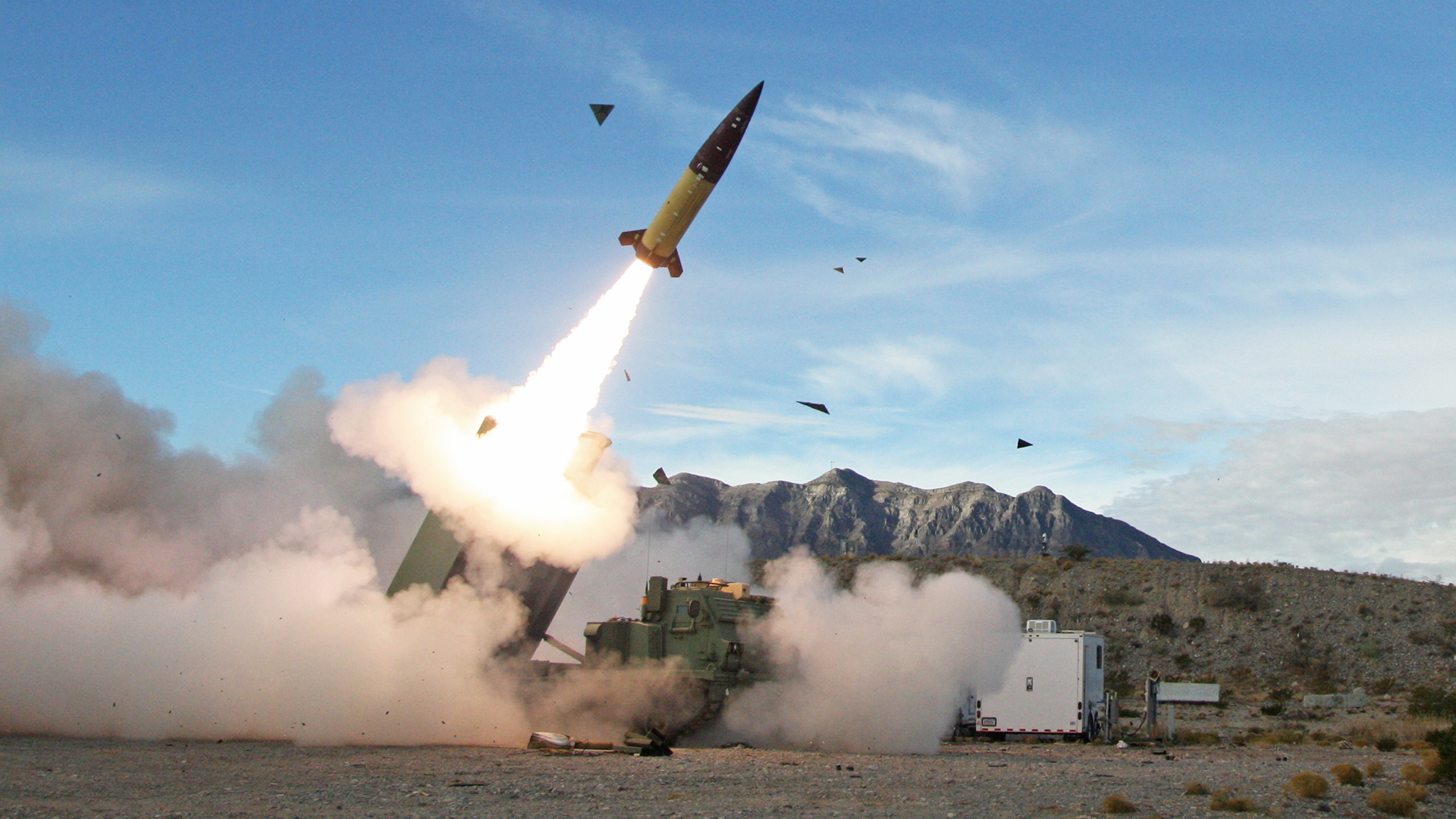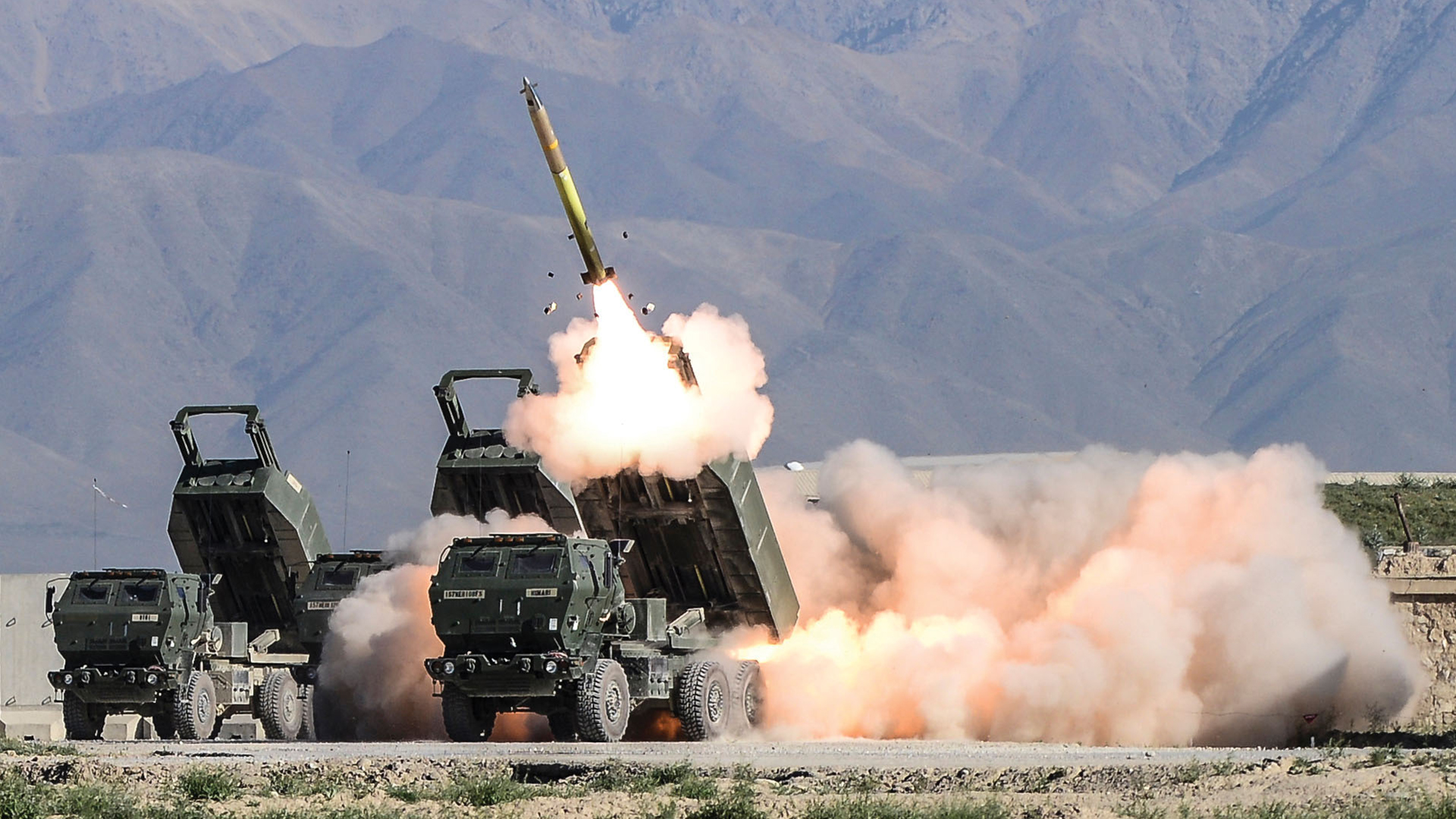Guided artillery rockets from U.S. stocks are likely on their way to Ukraine, where they should extend the reach of Ukrainian forces but fall short of enabling strikes deep within Russian territory, the Wall Street Journal reported on Monday.
The decision to send Guided Multiple Launch Rocket Systems (GMLRS) into the fight with Russia, but not longer-range weapons like the Army Tactical Missile System (ATACMS), aligns with President Joe Biden’s pledge not to send weapons Ukraine could use to hold targets at risk hundreds of kilometers inside Russia. Still, the GMLRS systems should boost Ukrainian firepower in the ongoing fight for the Donbas, where long-range massed artillery has been a decisive factor.
Biden said giving Ukraine weapons capable of striking Russia could escalate the conflict and potentially drag NATO into the war. The Biden administration is expected to make a formal announcement sometime this week, The Journal reports. Sending long-range artillery weapons to Ukraine has been a hot topic and The War Zone recently explored in-depth just what launchers for these weapons such as the Multiple Launch Rocket System (MLRS) and High Mobility Artillery Rocket System (HIMARS), as well as their varied ammunition, could and couldn’t do for Ukraine.

“We are not going to send to Ukraine rocket systems that strike into Russia,” Biden said from the South Lawn of the White House on Memorial Day before a meeting with Gold Star Families. Biden went on to field a few questions about domestic gun control legislation and did not elaborate on future military assistance to Ukraine.
The maximum range of these systems depends on what they’re firing. The longest-range artillery rockets currently available for GMLRS are the M30 (submunition warhead) and M31 (unitary warhead) precision-guided types, which are GPS/INS guided and can hit targets out to around 43 miles (70 kilometers). Both munitions can be used against massed targets, and fewer rockets are needed to accomplish the intended effects due to their precision.
Biden’s comments rule out the U.S. sending MGM-140 Army Tactical Missile System (ATACMS), which has a maximum range of about 190 miles (300 kilometers). Both GMLRS and ATACMs can be launched using the M270 MLRS or HIMARS. There also are political and legal hurdles to transferring long-range munitions like ATACMS to Ukraine.

An earlier story from CNN said the next major military aid package for Ukraine could include HIMARS or the M270 MLRS. This follows recent successes by the Russian military in Ukraine’s eastern Donbas region, thanks in no small part to massed artillery fire.
Lockheed Martin, which builds the GMLRS rockets, describes them as among the “MLRS family of munitions” since they can be fired from either an MLRS tracked launcher or a HIMARS wheeled launcher.
The M270 features a launch system mounted on a tracked chassis derived from the Bradley infantry fighting vehicle. The launcher can fire a variety of 227mm artillery rockets. A single M270 can be loaded with two “pods” of containerized artillery rockets at a time, allowing it to fire up to 12 rockets or two ATACMS missiles before reloading.
The M142 features a smaller launch system, which can only hold one pod at a time, mounted on a 6×6 Family of Medium Tactical Vehicles (FMTV) truck chassis. Though it has less firepower, the M142 is more mobile and flexible on-road than the larger system and can fit inside a C-130 for rapid deployment.

Both launching systems can also fire unguided rockets and they are generally more accurate than Russian unguided rocket artillery systems. While the unguided M26 rocket used by MLRS and HIMARS has a range of about 20 miles, its guided cousin reaches out to over double that distance. Russia’s BM-30 Smerch rocket artillery system, the largest of its kind, has an effective range of about 56 miles, but accuracy suffers significantly at that range. The M30 and M31, with their extended reach, can put the BM-30 in range of attack in many instances.
However, the only unguided rockets available for MLRS and HIMARS are loaded with cluster munition warheads. The submunitions in the warheads, M77 or M85 Dual-Purpose Improved Conventional Munitions (DPICM), are of imperfect reliability. When unexploded, the submunitions pose a serious threat to friendly forces and innocent bystanders as well as enemy troops. Still, both sides are using Soviet-designed submissions as it is, so this is likely of little consideration.
The systems will undoubtedly give Ukraine a leg up in their fight with Russian forces in the east and south. Still, they will not necessarily be a silver bullet against opposition armor and artillery, as you can read in this War Zone analysis.

A limited supply of GMLRS could provide Ukraine with standoff fire capability against Russian armored vehicles and positions beyond the reach of many opposing artillery batteries. The guided rockets themselves would be valuable weapons that likely would not be fired in massed volleys unless the target was an extremely high priority. This lessens their utility against a broad Russian offensive over open terrain, as has been Moscow’s strategy in the Donbas region.
It remains unclear how many GMLRS munitions are headed for Ukraine, but they could arrive in the country within weeks, according to the Wall Street Journal. It is unclear where U.S. stocks of the weapons stand and even less clear what the use rate of such weapons will be in a fast-moving conflict like the one raging in Ukraine. The Army’s fiscal year 2023 spending plan calls for procuring 4,596 GMLRS rockets at a cost of $773.731 million, or about $168,000 apiece. Fiscal 2023 also is the first year where the Army will buy new GMLRS pods instead of repurposing older MLRS pods. Low-rate initial production of 216 pods, each with six rockets, at a cost-per-unit of $60,000, is scheduled.
It isn’t clear how unguided rockets will play into all this, but Ukraine could use the steady and large supply of unguided rockets fired by either HIMARS or MLRS just as much as guided ones in small numbers as we previously detailed in our analysis. We would expect this weapons transfer will include a mix of both.
Training Ukrainian forces to operate the systems is another consideration, as the GMLRS munitions are basically guided missiles that are more complex to handle and operate than conventional artillery. The Journal reported that training of Ukrainian forces would begin as soon as the launchers arrive, but the report did not say whether U.S. personnel would provide the instruction. Uniformed U.S. military personnel are not in Ukraine, so any training provided by American troops would be conducted in an allied European country. HIMARS, in general, has become a more popular system as of late in Eastern Europe, with Poland putting in a huge order for the systems just days ago. Romania also operates the system.
With the delivery of either launcher and the GMLRS munitions, the U.S. is answering Kyiv’s repeated calls for longer-range artillery weapons to knock out Russian forces attacking from the east. Even at just over 40 miles, GMLRS will double the strike range of the M777 howitzers the U.S. has already sent. Those cannons have gone into service in the Donbas, where Russian and Ukrainian forces are in a duel for territory largely waged with artillery.
Longer-range rocket artillery has the potential to alter the balance in the ongoing struggle for the Donbas but likely will not be a slam dunk against Russian forces determined to at least hold onto territory it currently controls. That being said, the prospect of ATCAMS being part of the deal is now pretty much dead, with the White House set on keeping weapons transfers to capabilities that can reach out dozens of miles, not hundreds.
UPDATE: 8:50 PM EST—
In an op-ed published by The New York Times, U.S. President Joe Biden has confirmed that the U.S. government will transfer to the Ukrainian military “more advanced rocket systems and munitions that will enable them to more precisely strike key targets on the battlefield.” Separately, a senior U.S. official briefing reporters ahead of a more formal announcement scheduled to occur on June 1 further confirmed that the weapon systems in question were M142 High Mobility Artillery Rocket Systems (HIMARS).
It remains unclear exactly what types of munitions will be included along with the HIMARS launchers. It’s also not clear if other items will be included in the complete military assistance package, which is valued at approximately $700 million in total.
The senior U.S. official said that American authorities have received assurances from their Ukrainian counterparts that the HIMARS systems will not be used to strike targets inside Russia. It has not yet been clarified whether or not this stipulation covers areas of Ukraine that Russia occupies, but considers to be its territory, namely the Crimean Peninsula, or breakaway regions that the government in Moscow has recognized as independent countries.
“We do not seek a war between NATO and Russia. As much as I disagree with Mr. Putin, and find his actions an outrage, the United States will not try to bring about his ouster in Moscow,” Biden wrote in his op-ed. “We are not encouraging or enabling Ukraine to strike beyond its borders.”
“We currently see no indication that Russia has intent to use nuclear weapons in Ukraine, though Russia’s occasional rhetoric to rattle the nuclear saber is itself dangerous and extremely irresponsible,” the U.S. President added, addressing fears about escalation and the potential for direct conflict with Russia that have been raised on multiple occasions, including in connection with the delivery of weapons like HIMARS to Ukraine. “Let me be clear: Any use of nuclear weapons in this conflict on any scale would be completely unacceptable to us as well as the rest of the world and would entail severe consequences.”
Contact the author: Dan@thewarzone.com
